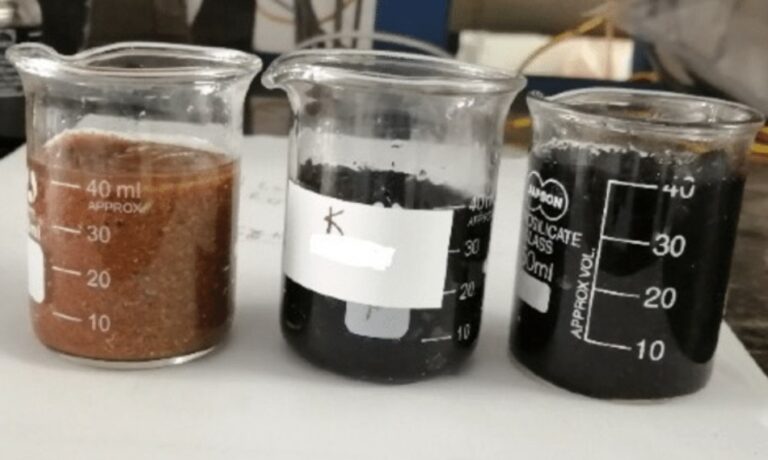Population: Ecology, Size, Density, Growth Rate & Curve, Carry capacity, Sex ratio

Population
In biology, a population refers to a group of individuals of the same species living in the same geographic area at the same time and capable of interbreeding. The individuals in a population share a common gene pool and are subject to similar environmental factors and selective pressures.
Populations can be defined and studied at different levels, such as at the level of a city, a region, a country, or the entire planet. Population size, density, distribution, and age structure are important factors that can affect population dynamics, including birth rates, death rates, immigration, and emigration.
Studying populations is important in fields such as ecology, conservation biology, and epidemiology, as it can help us understand how populations respond to environmental change, how they interact with other species, and how they spread diseases.
Population ecology
Population ecology is a branch of ecology that focuses on the study of the interactions between individuals of the same species in a given population, and how these interactions influence population dynamics, distribution, and structure over time. It involves the study of various factors that affect the growth, reproduction, and survival of populations, including environmental conditions, resource availability, predation, competition, and disease.
Population ecology seeks to understand how populations change in size, density, and composition over time, and how these changes are influenced by factors such as birth rates, death rates, immigration, and emigration. It also aims to identify the mechanisms that regulate population growth and the factors that contribute to population fluctuations and cycles.
Population ecology is an important field of study because it provides insights into the functioning of ecosystems, the relationships between species, and the impacts of human activities on biodiversity and ecosystem services. The knowledge gained from population ecology can also inform conservation efforts and the management of natural resources.
Population size:
Population size refers to the number of individuals of a particular species present in a defined area or habitat at a given point in time. It is an important parameter for understanding the dynamics of populations and for assessing the health and status of ecosystems.
Population size can vary widely depending on various factors such as the availability of resources, predation, competition, disease, and environmental conditions. In general, populations tend to grow when there are abundant resources and favorable conditions for reproduction and survival and decline when resources are scarce or when conditions become unfavorable.
Population size can be estimated using a variety of methods, such as direct counts, mark-recapture techniques, and aerial or remote sensing surveys. Accurate estimates of population size are important for managing and conserving populations, predicting the impacts of human activities on ecosystems, and developing effective conservation strategies.
Population density:
Population density refers to the number of individuals of a particular species present per unit area or volume of habitat. It is a measure of how crowded a population is in a given area or habitat.
Population density is an important parameter for understanding the dynamics of populations, as it can affect the availability of resources, the level of competition among individuals, and the transmission of diseases. In general, populations with high densities tend to have greater competition for resources, higher rates of disease transmission and may be more vulnerable to environmental fluctuations and other factors that can affect population dynamics.
Population density can be estimated using a variety of methods, such as direct counts, quadrat sampling, and mark-recapture techniques. Accurate estimates of population density are important for managing and conserving populations, predicting the impacts of human activities on ecosystems, and developing effective conservation strategies.
Check out: STUDY OF THE FISH FAUNA AND PHYSICOCHEMICAL PARAMETERS OF IKPOBA RIVER AT BENIN CITY EDO STATE
Natality:
Natality refers to the birth rate or the rate at which new individuals are added to a population over a given period of time. It is one of the key factors that contribute to population growth and can be influenced by various factors, such as age structure, reproductive success, and environmental conditions.
Natality is often expressed as the number of births per unit of population size or per unit of time. It can also be expressed as a percentage of the total population or as the number of births per unit of reproductive capacity.
In ecology and population biology, understanding natality is important for predicting and managing population growth, assessing the health and status of ecosystems, and developing effective conservation strategies. In epidemiology, natality can also refer to the number of cases of a particular disease that occur in a population over a given period of time.
Mortality:
Mortality refers to the rate or frequency of deaths in a population over a given period of time. It is an important factor that affects population growth, as it determines the rate at which individuals are lost from a population.
Mortality can be influenced by various factors, such as age structure, genetic factors, environmental conditions, predation, disease, and human activities. Mortality can be expressed as the number of deaths per unit of population size or per unit of time. It can also be expressed as a percentage of the total population or as the probability of death for individuals in a particular age group or under particular environmental conditions.
In ecology and population biology, understanding mortality is important for predicting and managing population growth, assessing the health and status of ecosystems, and developing effective conservation strategies. In epidemiology, mortality can also refer to the number of deaths due to a particular disease or condition in a population over a given period of time.
Population growth rate:
Population growth rate refers to the rate at which the size of a population changes over a given period of time, taking into account the effects of births, deaths, immigration, and emigration. It is an important parameter for understanding the dynamics of populations and for assessing the health and status of ecosystems.
Population growth rate can be expressed as a percentage or a number, and it can be calculated using various methods, such as the difference between the number of births and deaths, the difference between the number of immigrants and emigrants, or a combination of these factors.
A positive population growth rate indicates an increase in the size of a population, while a negative population growth rate indicates a decrease. The population growth rate can also be zero, indicating that the number of births and deaths or the number of immigrants and emigrants are equal, resulting in no net change in the population size.
The population growth rate is influenced by various factors, such as the availability of resources, environmental conditions, predation, disease, competition, and human activities. Understanding the population growth rate is important for managing and conserving populations, predicting the impacts of human activities on ecosystems, and developing effective conservation strategies.
Survivorship curves:
Survivorship curves are graphical representations of the pattern of survival of individuals in a population over time. They are used to describe the likelihood of an individual in a population surviving to different ages or stages of life and to compare the survival patterns of different populations or species.
Survivorship curves are typically plotted as a graph with the proportion of individuals surviving on the y-axis and age or time on the x-axis.
Four types of survivorship curves
- Type I: life expectancy will decrease
- Type II: life expectancy will be Constance
- Type III and IV: life expectancy will vary.
Sex ratio:
The sex ratio refers to the proportion of males to females in a population. It is an important demographic parameter that can provide insights into the social and ecological dynamics of a population.
The sex ratio is typically expressed as the number of males per 100 females, or vice versa. A sex ratio of 100 indicates an equal number of males and females, while a ratio greater than 100 indicates a higher proportion of males, and a ratio less than 100 indicates a higher proportion of females.
The sex ratio can be influenced by various factors, such as genetic factors, environmental conditions, predation, disease, and human activities. In some species, the sex ratio can also be biased by sex-specific mortality rates, differences in reproductive success, or sex-selective behavior.
Understanding the sex ratio is important for predicting and managing population dynamics, assessing the health and status of ecosystems, and developing effective conservation strategies. It can also have important implications for social and economic systems, such as in human societies where imbalanced sex ratios can have significant social and economic impacts.
Age distribution or structure:
the particular age of a population greatly determines the rate of the population
Type of individual in an age distribution
- Pre productive juvenile
- Productive adult
- Post-productive adult
A population that has mainly pre-productive Juvenile are expected to grow in the future, and a population with mainly productive adult will be growing. But a population with post-productive adults whose productive success is low will face low population
Population growth curve:
A population growth curve is a graphical representation of the change in the size of a population over time. It shows how the population size increases or decreases in response to changes in birth rate, death rate, immigration, and emigration.
Population growth curves can take different shapes depending on the factors influencing population growth. The most common types of population growth curves are:
- Exponential growth curve: This type of curve shows a rapid increase in population size as the birth rate exceeds the death rate, and immigration exceeds emigration. The curve is typically J-shaped, indicating that the population grows exponentially over time.
-
Logistic growth curve: This type of curve shows a gradual increase in population size followed by a leveling off as the population approaches the carrying capacity of the environment. The curve is typically S-shaped, indicating that the population grows exponentially at first, but then slows down and reaches a stable equilibrium at the carrying capacity.
a typical growth curve consists of
- Log phase
- Lag phase
- Stable / equilibrium
Understanding population growth curves is important for predicting and managing population dynamics, assessing the health and status of ecosystems, and developing effective conservation strategies. It can also help to identify the factors influencing population growth and to evaluate the impacts of human activities on ecosystems.
Carry capacity:
Carrying capacity refers to the maximum number of individuals of a species that a particular habitat or ecosystem can support over a sustained period of time, given the available resources and the prevailing environmental conditions.
The concept of carrying capacity is important in ecology and conservation biology, as it helps us to understand the relationships between populations and their environments. It is influenced by a range of factors, such as food availability, water supply, habitat quality, predation, disease, and climate.
When a population exceeds its carrying capacity, the available resources become depleted, and the population may experience a decline in growth or even a population crash. Understanding the carrying capacity of habitat is therefore crucial for managing natural resources, predicting and mitigating the impacts of human activities, and developing effective conservation strategies.
However, it’s important to note that carrying capacity is not a fixed value and can be influenced by various factors such as environmental changes or management interventions.

